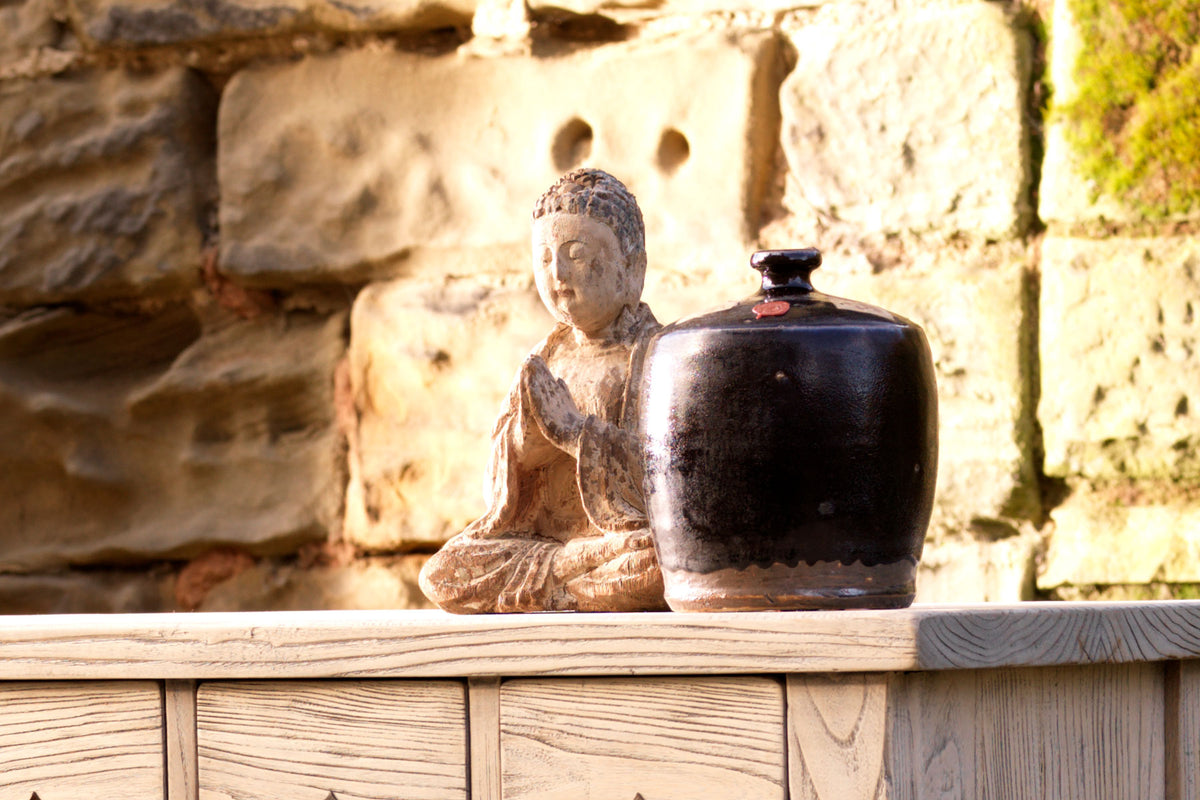
Government inspectors and a beautiful Shanxi display cabinet
We’ve been busy finalising our latest shipment of antique Chinese furniture to leave from Beijing and the container will be on its way in the next week or so. The ‘relic inspection’ took place yesterday so it should be a matter of days before everything is packed up ready to go. In China any old and antique pieces to be exported are required by law to be checked by a customs official before they are allowed to leave the country. A wax seal is then placed on each item to show that they have been checked and can be exported. If you’ve bought an antique from us or have ever been into the showroom and taken a look as some of the smaller accessories that we import along with our furniture, you will recognise the little wax seal from the ‘Cultural Relics Bureau’ (you'll see one on the stone vase in the main image above).
In recent years the Chinese government has been increasingly strict about checking all items. Antique furniture is a little easier to get through the inspection unless very old but ceramics in particular as well as items from certain parts of China (notably Tibet) are notoriously prone to being tied up in red tape. One of our suppliers in Beijing has had whole containers rejected simply because of one or two pots that were considered unsuitable for export. Thankfully we have never had any issues with items being rejected by the officials but the whole process can take a frustratingly long time.
The container this time includes some of the items that we did not have room for last time, as well as some superb pieces that we have just about finished adding onto the website. As usual there will also be a whole array of smaller accessories, some of which will go onto the website and others which will be available only through our showroom here in Saltaire.
One of my favourite pieces is this wonderful cabinet from Shanxi province in western central China. Shanxi is very well known in China for the quality of its furniture and many of the pieces that have made their way over to Europe and America in recent decades originated in the province. Because it is largely cut off from the rest of China by mountain ranges and has an abundant supply of natural resources, the furniture managed to survive much of the worst of the Cultural Revolution – whereas in other regions antiques were destroyed or even burnt to fuel back yard steel furnaces. The furniture was also well preserved, often with cloth used below the lacquer to bind the joins together.
 |

|

|

|

|
Cabinets like this one, with an open shelf space in the upper section and doors below, are less common than the standard two door cabinets, and are referred to as display cabinets or ‘wanli ge’ in Chinese. The upper section would be used to display vases or ornaments, while inside would be stored books and documents or valuables. Like other Chinese cabinets, they were almost always made in pairs.
This particular cabinet is around a hundred years old and is in excellent condition, with just some wear in the lacquer around the base. The lacquer itself is in a rich red – produced from the cinnabar pigment that was commonly used in Shanxi and Qinghai provinces. The upper open section is framed by some wonderfully intricate carvings of flowers, beautifully preserved and still with traces of the original lacquer in green. The narrow doors in the lower section are set within outer panels – similar to Qinghai furniture, rather than being mounted on the frames of the cabinet. Along with the small, understated brassware, this gives a clean, minimal style that draws the eye to the more decorative section above. The cabinet is also a little smaller in size than most other display cabinets seen, making it easier to fit into many modern reception rooms.
The detailed carvings around the shelf make this piece quite special, and it’s a type of piece that I have only rarely seen on my visits to China. Due to arrive with us around the end of May it will certainly make a beautiful addition to someone’s home here in the UK.





Leave a comment